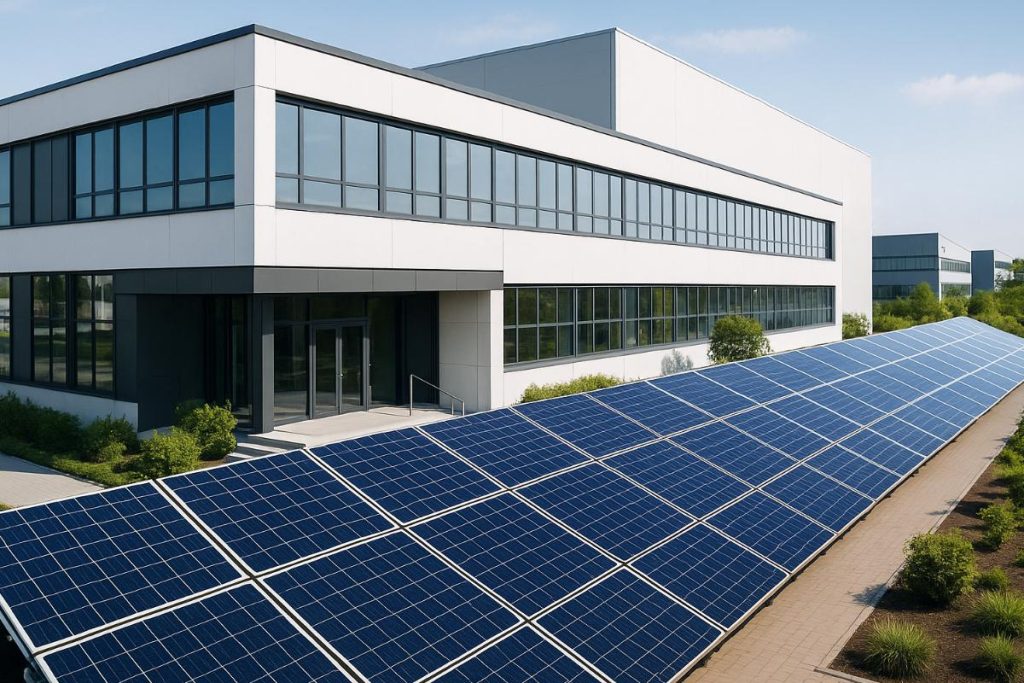Modern industry faces the constant challenge of producing more, with higher quality, lower costs and reduced environmental impact. In a scenario marked by global competition and the demands of consumers and regulators, it has become essential to adopt management practices that combine operational efficiency with sustainability.
This combination is an advantage and a requirement for staying in the market in the long term. Companies that integrate productivity and environmental responsibility into their management models are able to optimize their resources, reduce waste, increase market confidence and maintain compliance with increasingly stringent legislation.
The importance of strategic environmental planning
Implementing sustainable management in the industrial sector starts with good strategic planning. This means assessing the life cycle of products, identifying environmental bottlenecks in production processes and setting clear targets for reducing impacts.
These goals need to be aligned with corporate objectives, ensuring that sustainability is integrated into the business and not isolated as a parallel action. Effective planning must include environmental performance indicators (KPIs), continuous monitoring and corrective actions.
- Clear indicators make performance measurable: Well-defined metrics show what is working and what needs to be adjusted.
- Decision-making gains objectivity and agility: concrete data reduces subjective discussions and speeds up the decision-making process.
As well as reducing environmental risks, this type of management provides greater predictability and control over operating costs, making the company more resilient and prepared for the future.
In this context, the installation of a accessibility handrails in industrial environments is not just a legal requirement, but a demonstration of inclusion and concern for the safety of all employees, reinforcing the sustainable commitment in social terms as well.
Energy efficiency as a competitive differentiator
Energy efficiency is one of the pillars of sustainable management and has a direct impact on production costs and greenhouse gas emissions. Investing in solutions that optimize energy consumption reduces costs and improves the company's environmental performance.
Technologies such as high-performance motors, intelligent sensors and automated lighting systems are important allies in this process. In addition to modernizing equipment, it is essential to promote a culture of conscious energy use among employees.
- Promoting continuous education strengthens the organizational culture and increases commitment to sustainable objectives.
The adoption of renewable sources, such as solar energy and biomass, also represents a viable alternative for many industries, especially when combined with intelligent management systems.
In many cases, the adoption of sustainable solutions also involves the use of temporary or permanent structures for exhibitions and sales, as in a stand design that prioritizes the reuse of materials, modularity and clean assembly, reducing the environmental impact of trade fairs and industrial events.
Intelligent industrial waste management
The proper treatment of waste is another key aspect of sustainable management. Innovative companies are finding ways to reuse it, turning it into raw material for new processes or products.
- reuse reduces pressure on ecosystems and the need for new farms.
- less waste generated means lower costs for transportation, treatment and environmental permits.
For this to work, it is necessary to adopt an efficient sorting system, invest in recycling technologies and enter into partnerships with companies that specialize in reusing materials.
In addition, waste management must include the control of hazardous substances and the traceability of discarded materials. This not only reduces environmental and legal risks, but also generates new business opportunities.
Industries operating in commercial environments can also apply these practices in facilities such as a shopping kioskIn addition, it has adopted furniture made from recyclable materials, low-consumption lighting and appropriate disposal solutions for the waste generated during operation.
Automation and digitalization at the service of sustainability
With the use of sensors, management software and real-time data analysis, it is possible to precisely control resource consumption, identify operational faults and adjust processes automatically. When properly applied, automation reduces human error, improves the use of raw materials and reduces rework.
Tools such as integrated management systems, the Internet of Things and artificial intelligence provide a broad and detailed view of operations. This visibility is essential for making more agile and informed decisions.
- digital systems guarantee accurate and consistent records over time.
- Environmental management software allows you to export data in the format required by regulatory bodies.
- documentation is organized and available for consultation at any time.
Efficiency also lies in the details of the industrial structure. A good example is the choice of durable and sustainable materials, such as metal stopIn addition to offering resistance and a long service life, it reduces the need for constant maintenance, helping to reduce waste over time.
Organizational culture and the role of leadership
No change in management is really effective if it is not supported by an aligned organizational culture. This means involving all employees in the mission to make the industry more efficient and sustainable.
Leadership plays a fundamental role in this process, setting an example and acting as a facilitator of the necessary changes. For a culture of sustainability to take root, it is important to invest in internal communication, constant training and recognition of good practices.
The creation of sustainability committees and the inclusion of environmental goals in career plans are strategies that encourage engagement. When professionals understand the impact of their actions and feel part of the process, the results become more consistent and lasting.
Sustainability in the supply chain
Industry's environmental responsibility is not limited to its own facilities. The supply chain is a direct extension of the business and needs to be considered within the sustainability strategy.
- Reverse logistics helps to reduce the environmental impact of products after use. Collecting, reusing or recycling returned products creates value and closes the production cycle.
- Mapping a product's life cycle makes it possible to identify critical points of impact. From raw materials to disposal, knowing where the greatest consumption of resources or generation of waste lies is essential.
Audits, certifications and demands for environmental compliance in contract negotiations are measures that guarantee a sustainable standard throughout the chain. In addition, investing in partnerships with local suppliers can reduce transportation emissions and strengthen the regional economy.
Industrial sustainability indicators and metrics
For sustainable management to be effective, it needs to be measurable. Defining clear indicators makes it possible to monitor the evolution of processes, identify deviations and adjust course whenever necessary.
Metrics such as energy consumption per unit produced, volume of waste generated, reuse rate and CO₂ emissions are essential in this monitoring. The use of integrated dashboards and Business Intelligence systems makes it easier to analyze data and generate reports.
With this information, senior management can make more strategic decisions, based on real data, and transparently communicate progress to stakeholders. Measurement is also crucial for obtaining certifications and proving compliance with ESG targets.
Long-term benefits for companies and society
Sustainable management doesn't just bring immediate operational results, it represents an investment in the company's future. Industries that adopt responsible practices gain more market confidence, attract conscientious investors and increase their international competitiveness.
They also reduce the legal and reputational risks associated with environmental impacts. From a social point of view, these companies contribute to the quality of life in the communities where they operate, promote inclusion and strengthen a fairer and more balanced economy.
Conclusion
Efficient and sustainable management in the industrial sector is a continuous journey of innovation, responsibility and long-term vision. Integrating sustainable practices into industrial processes is no longer a choice, but a requirement imposed by market challenges, legislation and society.
The industry that thinks beyond the present and invests in the sustainability of its operations will be prepared for the challenges of a world that increasingly demands efficiency with a conscience.








